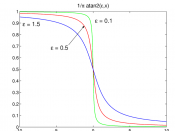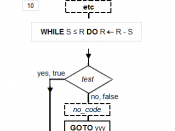Application 1
A primary school teacher requires a program that can be used to play a number-guessing game with young children; the aim being to develop logical strategies and practice their understanding of numbers. In this game the computer picks a number between 1 and 100 and gives the child 10 turns to guess the number. After each incorrect try, the computer tells the child whether the guess is too high or too low. If within the ten turns the number is correctly guessed the computer automatically picks a new number and plays the game again with the same child. If the number is not guessed correctly the game is restarted with another child.
Application 2
Develop an algorithm, again using pseudocode, which allows the user to input a variable number of examination marks, calculates the average and prints the average and the entered examination marks in descending order.
Due to these problems we must develop some steps in a pseudocode form which then could be converted into a chosen computer language -possibly Pascal, C++, Fortran, etc.
The steps of designing the algorithm for each problem are written in plain English suitable for the user to convert them into a computer language.
For Application 1:
Step 1: begin process
Step 2:Select a number from 1 to 100.
Step 3:Repeat the following until 10 times have elapsed. (loop statement)
Step 4:Prompt the user to enter a number from 1 to 100 and read it.
Step 5:Compare the entered number with the one randomly chosen.
Step 6:If the two numbers are equal do. (loop statement)
Step 7:exit loop
else
Step 8:print weather the number is too high/low from selected one.
Step 9:If entered number bigger than selected do (loop statement)
Step 10:print: the number is higher.
else
Step 11:print: the number is...


![function ArcCos[z] in the complex plane](https://s.writework.com/uploads/1/17449/function-arccos-z-complex-plane-thumb.jpg)